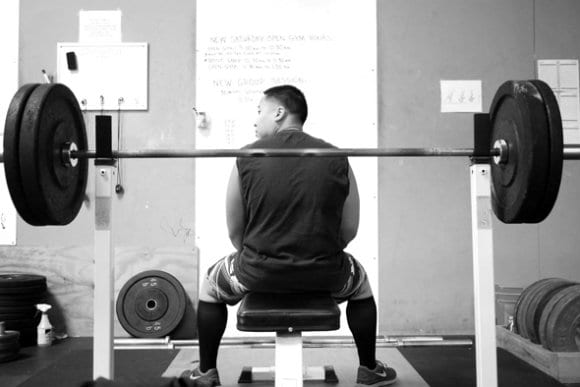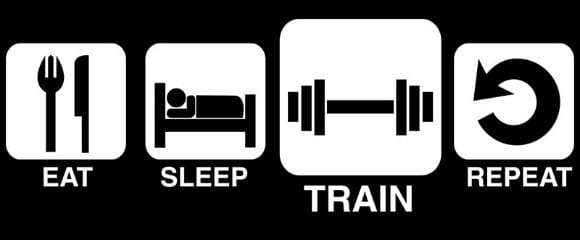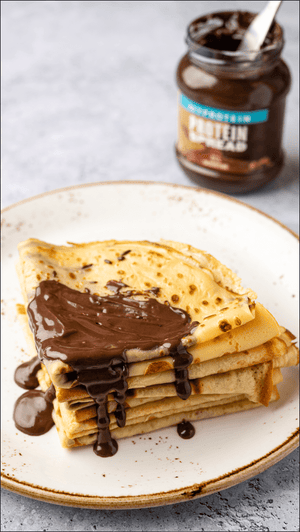
Gym Every Day
In the first part of this article we analyzed the historical roots and some of the aspects related to the diatribe between high frequency (and high volume) and low frequency (and low volume) training.
What is the Best Approach? Because?
Let me begin the discussion with an ambitious, almost Darwinian concept, namely the "natural selection of the gymnast": out of a random sample of people who approach weight / strength training for the first time, about 50% will give up. within the first year; then there is 45% of subjects who will continue to train, perhaps for several years, but most of the time in an inconsistent manner, with fluctuating commitment and lack of motivation; the remaining 5% is made up of the hard core, a small elite of subjects that I like to define affectionately (and self-deprecatingly) "gymnasiums".
The Reason for This Almost Obsessive Passion?
Let's admit it serenely: training, especially when a sufficient neuro-muscular connection and relatively high performance levels are reached, produces psycho-physical effects that involve addiction phenomena comparable to those of a substance of abuse.It is therefore not surprising that many gyms are inexorably drawn to the weight room and train on average 5-6 times a week (sometimes even 7 days a week, for several months without a day off), often for several hours a day.Unfortunately, this strategy, especially in the long run, is destined to become physiologically unsustainable and counterproductive.In fact, beyond a certain threshold, which varies from individual to individual, we run into the problem of overtraining, better known with the English expression " overtraining ", that is, our body is depleted of the metabolic resources necessary to repair muscle micro-injuries induced by training and / or the neuro-psychic energies and / or does not have the material time to complete these processes and restore these stocks; furthermore, hormonal homeostasis is greatly altered.
Even if the scientific community is not yet in agreement in recognizing overtraining as a well-defined clinical entity, especially because it is difficult to measure and objectify, most experts in the training sector believe it is established that an excessive training volume, for a repeated period, it leads to a significant decline in athletic and neuro-psychological performance (in a nutshell: overtraining exists!).There are no alternatives: to avoid the bugbear of overtraining you have to rest!Exceptions to the rule
Now, I can be countered with numerous examples of top-level athletes who train every day or almost, in a grueling way, and are able to achieve and maintain exceptional performances. True, these individuals exist, but I am able to list at least three main reasons why their situation is special and not comparable to the vast majority of us.1. Genetics
Only a small minority of "fortunelli" have a genetic heritage that gives them an exceptional response to training both in terms of results and recovery capacity.2. Professionalism
Molti degli atleti di livello olimpico (basti pensare ai ginnasti o ai nuotatori, che, nell’immaginario collettivo, sono due categorie sottoposte a carichi di lavoro molto elevati) sono professionisti, ovvero la disciplina che praticano e per cui si allenano è la loro unica occupazione, mentre noialtri atleti ricreazionali dobbiamo bilanciare lo stress indotto dal lavoro o dallo studio con quello indotto dall’allenamento.
3. Doping
Quest’ultimo punto è un po’ un tabù, però non può essere sottaciuto, perché una delle caratteristiche principali dei farmaci per l’aumento della performance (testosterone e sostanze derivate, in particolare) è quella di facilitare grandemente il recupero, incanalando i nutrienti verso le cellule muscolari e stimolando la sintesi proteica e quindi il rimaneggiamento delle proteine contrattili.
Notoriamente, una grossa fetta dei culturisti di alto livello e una percentuale imprecisata di atleti professionisti di quasi tutti gli sport (è verosimile che gli scandali che hanno coinvolto ciclismo e atletica leggera negli ultimi anni siano solo la punta dell’iceberg) fa uso di queste sostanze, senza le quali i lunghi e massacranti allenamenti a cui si sottopongono sarebbero sostanzialmente impossibili.
La maggior parte di noi non fa parte di nessuno delle 3 categorie appena citate, quindi (purtroppo) sarà meglio che ci autoimponiamo di resistere alla tentazione di strafare, di allenarci ogni giorno fino a sfinirci, perché, come dice un celebre proverbio americano: “qualche volta bisogna fare un passo indietro, per fare due passi avanti!”.
Il mio consiglio spassionato è quello di recarsi in palestra massimo 5 volte a settimana, ovvero prevedere almeno 2 giorni di riposo (riposo non significa necessariamente passare la giornata in coma sul divano davanti alla TV; attività fisiche leggere, come passeggiare o sbrigare faccende insieme ad amici o ai propri cari, sono straconsigliate per un buon recupero psico-fisico, persino più del riposo assoluto).
Sebbene ritengo che i risultati migliori si ottengano alternando un giorno di allenamento e un giorno di riposo, (se proprio non riusciamo a rimanere così tanto lontani dalla palestra) è abbastanza tollerabile una routine che contempli due giorni di allenamento seguiti da uno di riposo, ad esempio:
- Lunedì e Martedì: allenamento
- Mercoledì: riposo
- Giovedì e Venerdì: allenamento
- Sabato: riposo
- Domenica e Lunedì: allenamento
- Martedì: riposo
- … e così via ….
Recupero = Riposo + Nutrizione
È bene tenere a mente che l’altra componente fondamentale del recupero, oltre al riposo, è la nutrizione. Senza una buona alimentazione, se anche il riposo fosse adeguato, otterremmo comunque risultati mediocri.
Il capitolo nutrizione meriterebbe una trattazione a sé stante, quindi in questo articolo mi limito a rimarcarne l’importanza, in particolare per quanto riguarda la nutrizione peri-allenamento (ovvero i pasti immediatamente prima e dopo e gli eventuali integratori assunti durante l’allenamento stesso), a cui ho accennato nell’articolo precedente.
La Famigerata Triade “Eat, Sleep, Train”
Abbiamo parlato di sleep (riposare), del nostro amato train (allenarsi) e accennato a eat (mangiare).

Questo mantra è forse un po’ semplicistico, ma, in fin dei conti, riassume splendidamente ciò che serve per ottenere buoni risultati dall’allenamento coi pesi/di forza:
1. mangia (fai bene attenzione sia alla quantità che alla qualità dei nutrienti!);
2. riposa (lo so, questa è la parte più noiosa, ma ahinoi è necessaria altrimenti si rischia di vanificare tutto);
3. allenati (la parte più coinvolgente, a volte troppo …. Ricordiamoci sempre che per ottimizzare la crescita muscolare, l’allenamento deve fungere da stimolo, non deve essere un massacro per il nostro apparato neuro-muscolare. Perciò, come monito, cito una celebre frase del vincitore di 8 titoli di Mr Olympia, Lee Haney: “stimulate, do not annhilate!” ovvero sia “stimolare, non annientare!”).
... finally, to respond concisely to the questions we asked ourselves at the beginning of the article ...Train Every Day
It's possible? Yes, it would be. A pinch of initial motivation is all it takes ... over time, the workout is likely to be so enjoyable that the situation will turn around and it will be almost more difficult to take a day off than to go to the gym.It is necessary? Absolutely no.Is it profitable? Basically no, for the vast majority of us it would be better to adopt a routine that includes 2-3 days of rest per week.






